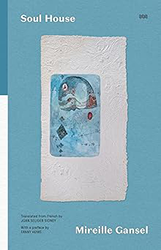Collette Brull-Ulmann was a twenty-two-year-old medical intern at the Rothschild Hospital in Paris during the Nazi occupation when she slipped off her mandated yellow star and joined a team to smuggle children from the hospital. Her bold deed is remarkable enough — but what is even more remarkable is that, after seven decades of keeping the story to herself, she wrote a memoir about it. Brull-Ulmann’s story was first published in French in 2017. She died in 2021 at the age of 101.
Through the Morgue Door is nonfiction, but it is so vividly written and full of suspense that it reads like a novel. That is in part due to Brull-Ulmann’s collaborator, French journalist Jean-Christophe Portes. He compiled her notes, interviewed her at length, and helped shape this gripping story.
Translator Anne Landau writes in her introduction, “Rothschild is a microcosm of occupied Paris, and Brull-Ulmann’s memoir is a microcosm of Jewish life at that time … she hides nothing.” The book thus gives an intimate view of Jewish life under the Nazi occupation, as well as one young woman’s journey from innocence through terror to daring resistance.
The hospital, built by the wealthy Rothschilds in the late 1800s, was located in the 12th Arrondissement, a gritty, working class neighborhood with “grimy streets and buildings black with soot.”The area was populated largely by poor Jews who had immigrated from Eastern Europe. Next door to an orphanage and a hospice, the Rothschild Hospital was considered an excellent facility and served not only Jews but all Parisians seeking medical care. Under the new laws of occupation, however, it was the last hospital in which Jewish doctors were allowed to practice.
Brull-Ulmann befriended several nurses and social workers whom she learned were part of a group of women who, after Kristallnacht, dedicated themselves to rescuing orphans and bringing them to France. Now at Rothschild, these hospital workers plotted to keep patients longer in the hospital so they wouldn’t be arrested and sent on the trains “East.”
As the noose tightened around Parisian Jews — with a nighttime curfew and laws against owning a radio or bike; using a public telephone; and attending museums, restaurants, or swimming pools — the role of the underground resistance became both more crucial and more dangerous. Many prisoners from Drancy were sent to the hospital, only to be returned and deported, making it an “antechamber of deportation.” The Nazi occupiers and their French collaborators carried out roundups in the hospital, literally dragging patients from their beds. Brull-Ulmann recalls that the horror “had reached here and was seeping into our buildings and into our souls.” She desperately ponders, “What use was this hospital?”
When a courageous social worker recruited Brull-Ulmann to the clandestine operation of rescuing babies and children from the hospital and orphanage, she accepted on the spot. That was how she learned there was a way out other than the main gate, which was manned by armed guards — there was also the eponymous morgue door. On her first rescue mission, she removed her star, took a six-year-old girl by the hand and carried her three-year-old brother, and walked out the morgue door. “On the other side,” Brull-Ulmann writes, “a dark chasm: rue Santerre, completely empty. I was already out of breath, my arms straining from the boy’s weight.”
Today, as bombs are falling around the world, and doctors and nurses risk their lives to care for their sick and wounded neighbors, Brull-Ulmann’s simple question — “What use was this hospital?” — resonates still. Hopefully, this remarkable story of a courageous young Jewish woman in Paris during World War II will remind us all about the power of compassion and humanity.
Elaine Elinson is coauthor of the award-winning Wherever There’s a Fight: How Runaway Slaves, Suffragists, Immigrants, Strikers, and Poets Shaped Civil Liberties in California.





